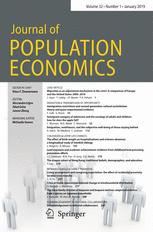The paper studies the migrant-native differences in wealth among older households in Europe which is significant and to the advantage of the natives. The importance of origin country, age at migration, and citizenship status in reducing the gap is shown.
Read more in:
Irene Ferrari: “The nativity wealth gap in Europe: a matching approach “
Journal of Population Economics, online, issue forthcoming.
Journal Website. Download PDF of article for free – OPEN ACCESS
GLO Fellow Irene Ferrari
Author Abstract: This study uses a matching method to provide an estimate of the nativity wealth gap among older households in Europe. This approach does not require imposing any functional form on wealth and avoids validity-out-of-the-support assumptions; furthermore, it allows estimation not only of the mean of the wealth gap but also of its distribution for the common-support sub-population. The results show that on average there is a positive and significant wealth gap between natives and migrants. However, the average gap may be misleading as the distribution of the gap reveals that immigrant households in the upper part of the wealth distribution are better off, and those in the lower part of the wealth distribution are worse off, than comparable native households. A heterogeneity analysis shows the importance of origin, age at migration, and citizenship status in reducing the gap. Indeed, households who migrated within Europe, those who moved at younger ages rather than as adults, and those who are citizens of the destination country display a wealth gap that is consistently smaller over the entire distribution.

Ends;
